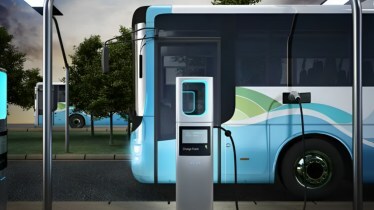By Manish Rathi
The landscape of India’s public transportation is swiftly evolving, embracing electric vehicles (EVs) as a catalyst for a sustainable future. In this transformation, EV technology has transcended the boundaries of urban mobility, expanding into the realm of long-distance travel. While the progression is promising, it is pivotal to approach this transition with a comprehensive, pragmatic viewpoint to ensure seamless integration of EV buses into the country’s transportation fabric.
With buses carrying nearly half of public transport in India, the shift to electric vehicles holds the potential to create a more environmentally sustainable and efficient transportation system for the nation’s masses. However, EV technology, especially concerning buses, encompasses a spectrum of challenges and opportunities. When delving into the nuances of this evolving industry, it becomes evident that to foster the success of EV buses for long-distance journeys, several critical elements need thoughtful consideration.
Firstly, the cornerstone of this transition rests upon battery technology and its endurance. The ability of the buses to sustain long journeys, surpass city limits and maneuvering through intercity routes, demands robust battery life and charging infrastructure. While the current advancements are promising, there remains a critical need for further enhancement. As it stands, the current state of the EV industry presents electric vehicles with ranges typically between 200 to 250 kilometres.
However, for practical use, especially for intercity travel covering distances around 400 to 500 kilometres, the existing battery capacity and charging times, usually around 50 minutes, pose limitations, requiring longer charging durations for longer journeys. While advancements are expected to enhance battery capacity and reduce charging times, the industry needs further development to better accommodate longer intercity travels catering to varying terrains and weather conditions, seamlessly.
Secondly, the current approach by original equipment manufacturers (OEMs) in designing electric buses for intercity travel needs a more comprehensive perspective. The design of EV buses requires meticulous attention, especially in terms of safety considerations. It’s not just about the kilometers covered, but also about ensuring the vehicles are designed and tested rigorously to meet safety standards for highway travel.
These buses are intended to operate at higher speeds, demanding rigorous safety testing and design considerations, which differ from city-centric electric buses that prioritise lightweight structures for better battery efficiency. However, the need for safety testing and comfort, akin to traditional long-distance internal combustion (IC) buses, has not been fully integrated into electric bus designs, yet. Unlike the established safety protocols undergone by conventional vehicles, EV buses, especially for long-distance travel, lack standardised safety measures, including crash and collision tests, which are imperative for ensuring a safer consumer product on the roads. This highlights the necessity for the EV industry to adopt stringent testing standards similar to those in the traditional automotive and bus sectors.
Developing an effective charging infrastructure for long-distance travel is another crucial aspect requiring attention in the EV industry. While cities have initiated robust charging networks, the challenge lies in ensuring adequate charging points and fast chargers for EV buses during extended journeys. The charging infrastructure needs to extend beyond urban centers to the highways and intercity routes to instill confidence in travelers and operators.
The fourth crucial aspect in the realm of intercity EV buses is defining the consumer’s value proposition. While there’s a misconception that electric buses are noiseless, the reality is at higher speeds, they produce considerable noise due to road friction and wind dynamics, much like internal combustion (IC) buses. The presumed environmental benefit is also being questioned due to concerns about the battery disposal impact, which diminishes their overall environmental friendliness. This ongoing debate challenges the concept that EV buses are the ultimate solution for environmentally conscious travel.
Lastly, the government’s role is critical in ensuring that the widespread adoption of long-distance EV buses happens with the right safety and infrastructural measures in place. This is especially true in the situation where despite the current unavailability of well-equipped buses, there is a considerable demand for city buses, overwhelming OEMs with orders and emphasising the need for significant infrastructure development. The state must recognise the unpreparedness of current EV buses in addressing essential safety, design, and infrastructure concerns and stress the necessity of collaboration between OEMs and operators to create buses that suit long-distance journeys. Providing incentives, facilitating financing options, and supporting training for operators with these gaps in mind, will be essential to drive this shift toward a sustainable future for public transportation.
The transition to long-distance EV buses holds immense promise, but a thoughtful and comprehensive approach is vital to ensure their successful integration. It’s not merely about launching buses but about creating a sustainable and dependable ecosystem that meets the needs and expectations of all stakeholders involved.
The author is Co-founder & CEO – IntrCity SmartBus
Disclaimer: The views and opinions expressed in this article are solely those of the original author. These views and opinions do not represent those of The Indian Express Group or its employees.
